If you like abandoned monasteries, you will enjoy visiting Askitario Monastery in Corfu, Greece. Here is some background information about this little known site.
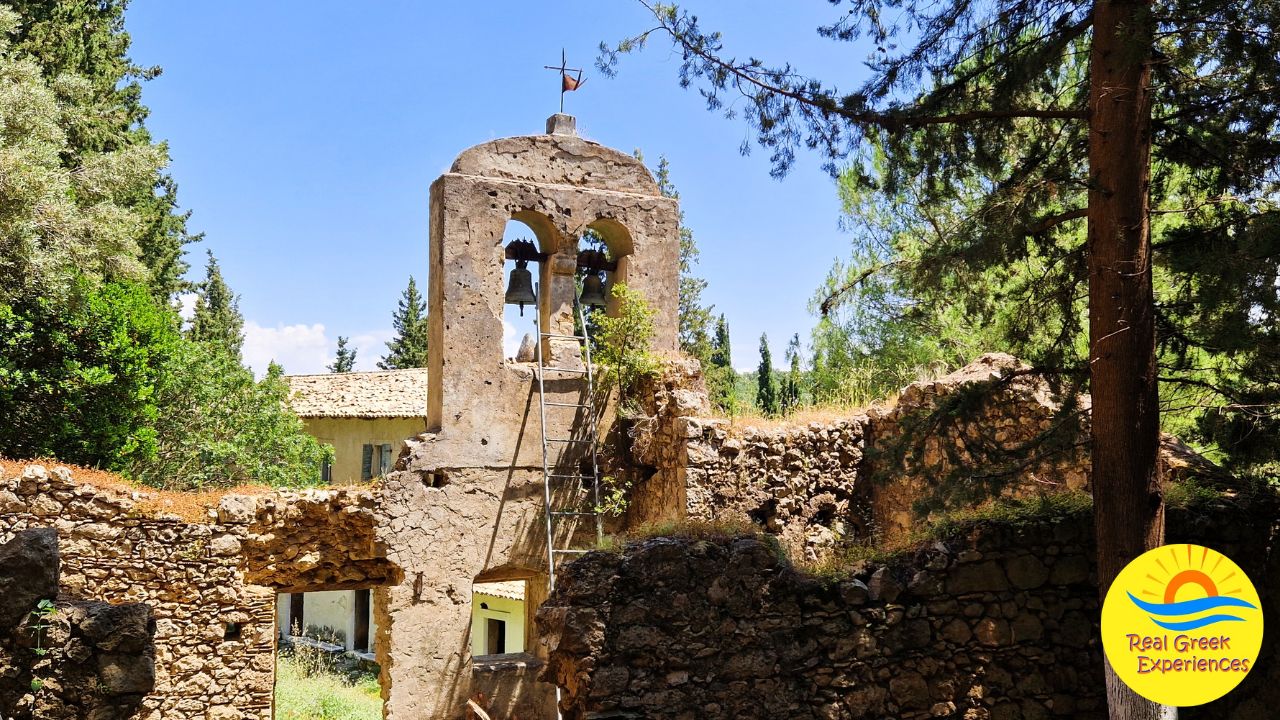
Askitario Monastery in Corfu
When it comes to monasteries in Corfu, not many people will mention Askitario. Yet, this abandoned monastery is an interesting place to visit when you are exploring the north of the island.
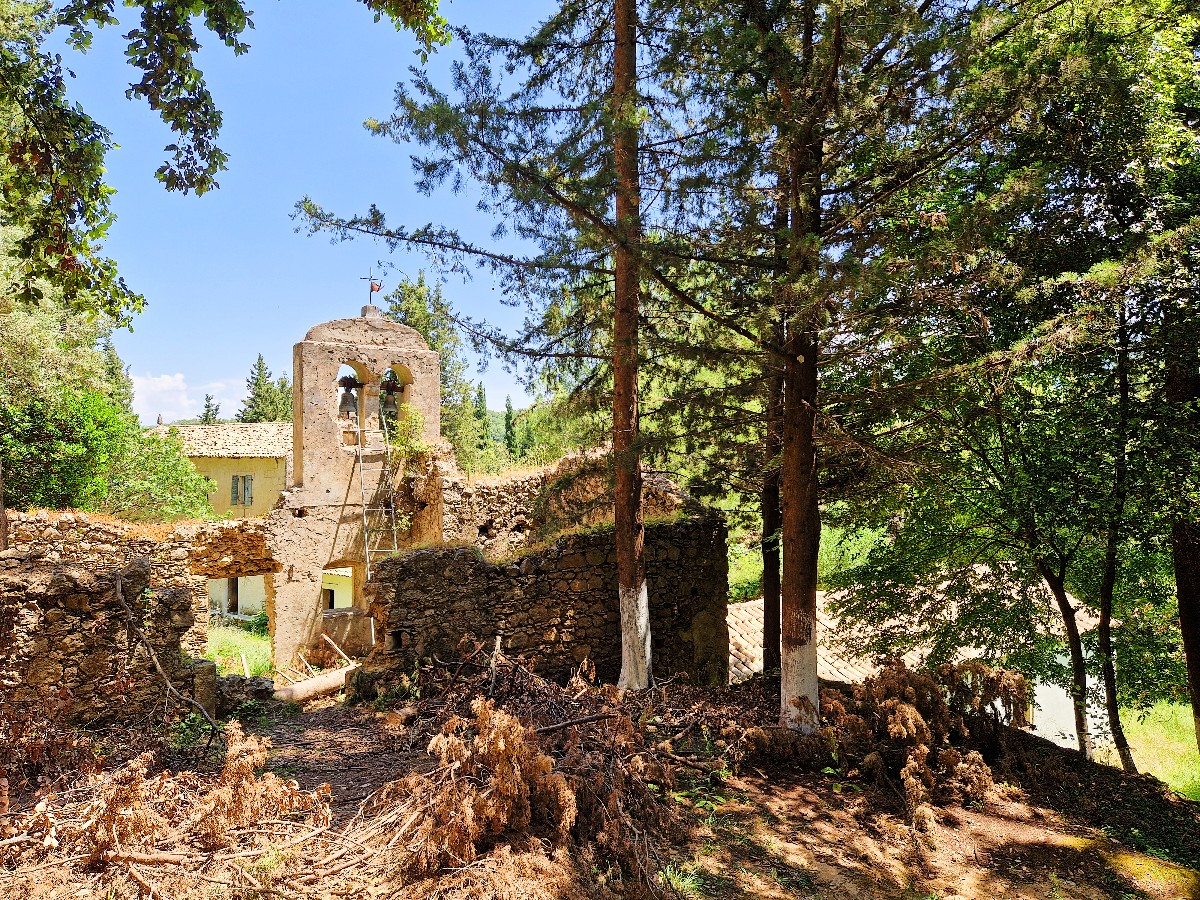
Askitario is located on the slopes of mount Pantokrator, close to a village called Nymfes. It’s about a 15-minute drive from Roda / Acharavi, and a half-hour drive from Kassiopi.
The monastery is surrounded by a thick forest of pine trees, cypress trees, oak trees and chestnut trees. You will also see some fig trees, and the very tall olive trees that are so characteristic of Corfu.
History of Askitario Monastery
Askitario is one of the oldest Christian monuments in Corfu, and its history goes back thousands of years. The word “Askitario” is linked to the word ascetic.
According to legend, a hermit monk known as Father Artemios Paisios, who came from Epirus, first settled in the area in the 5th century AD. He carved a hermit cave in a rock, and secluded himself from the world.
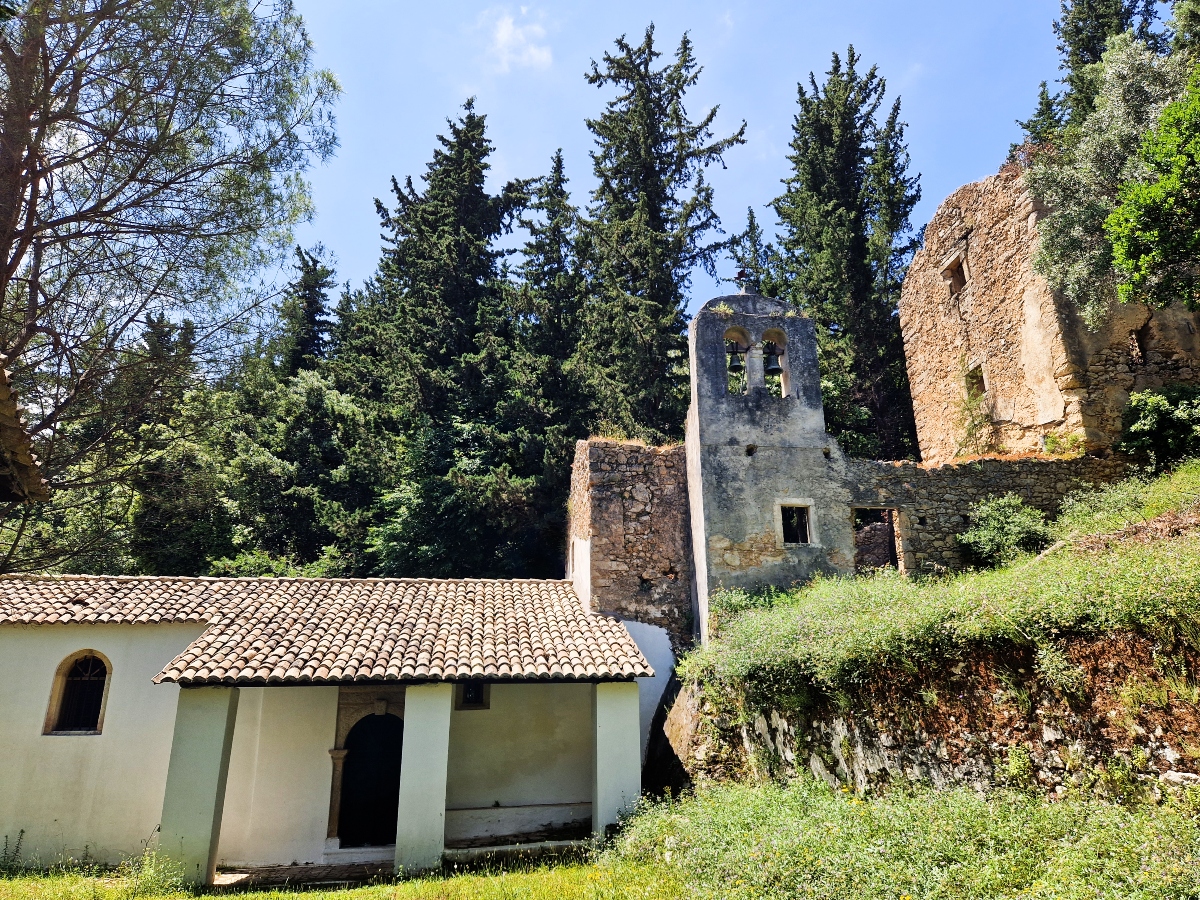
One day, the monk saw a boat coming from far away. He realized that these were his parents who were trying to find him, and ask him to return back home.
Paisios, who didn’t want to leave the monastery, dug a hole and hid inside. But, alas, a big boulder fell and completely blocked the entrance, trapping him inside.
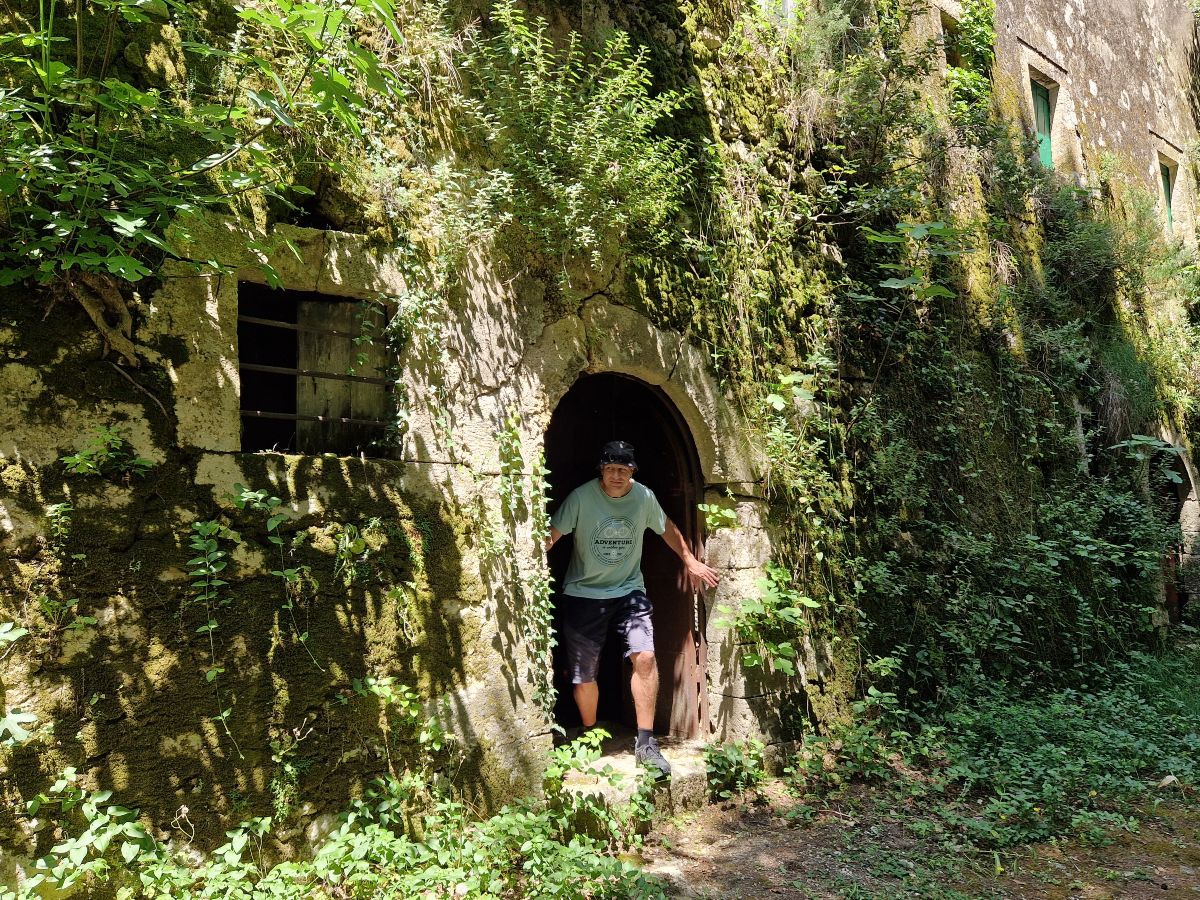
His parents arrived, and were devastated to find him under the boulder. They tried to move it, but they didn’t manage. They had to accept the fact that their son would stay there forever.
The couple decided to move to that area, so they could stay close to their son forever. They built a church, known as the Pantokrator church, as well as two cells for them to live in.
Historic evidence about Askitario Corfu
Legend aside, the monastery was thriving during the Byzantine and post-Byzantine years. The first written evidence referring to Pantokrator church dates from 1371.
Over the centuries, several monks and Fathers of the church stayed there, and they built more cells and caves in the rocks. As it sometimes happens in Greece, the monastery was exempt from taxes and had accumulated a significant fortune.

Several historic documents prove that Askitario was in direct communication with several other monasteries, in Greece and abroad, until the 17th-18th century.
Unfortunately, I haven’t managed to find any information about when and why the monastery was abandoned – but I’ll keep looking!
The agricultural school and olive press near Askitario
In the 1930s, an agricultural school was built next to the church. At the time, it had 40 students from the nearby areas. It closed down during WWII, and never operated again.
Today, you can still see what has remained of the old building. This includes the massive stone olive press, which is located in the basement.
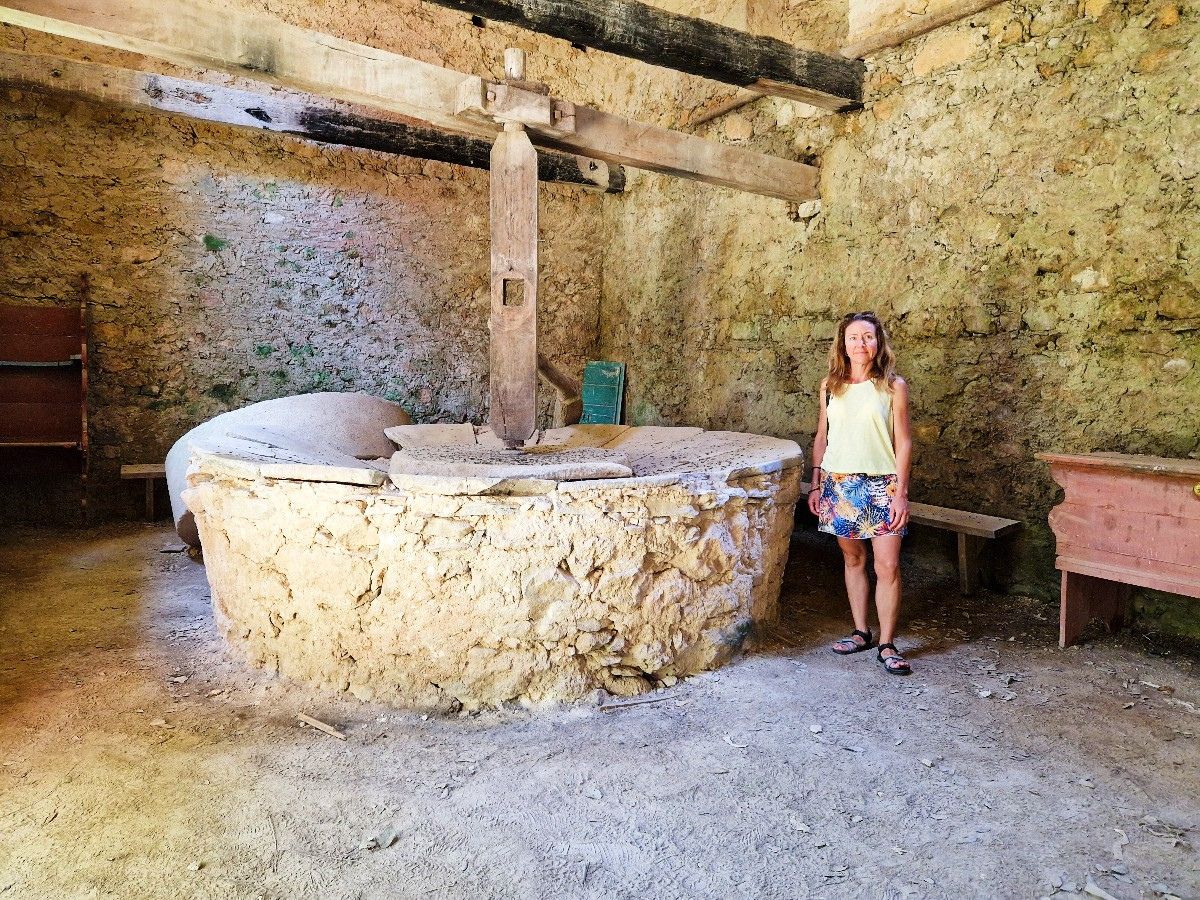
The building is crumbling – if, like me, you like abandoned places, you’ll love it! Just make sure you watch your step, and watch out for bits and pieces falling from the roof.
Fun fact: There’s a small WC right next to the abandoned building. As you would expect, it’s not the cleanest one you’ve seen – but it must be maintained by someone as you can actually flush it.
The Nymfes cemetery
A short walk from Askitario monastery, you will find the cemetery of Nymfes. It is a functioning cemetery, and a very solemn one, as all you can see around it is nature.
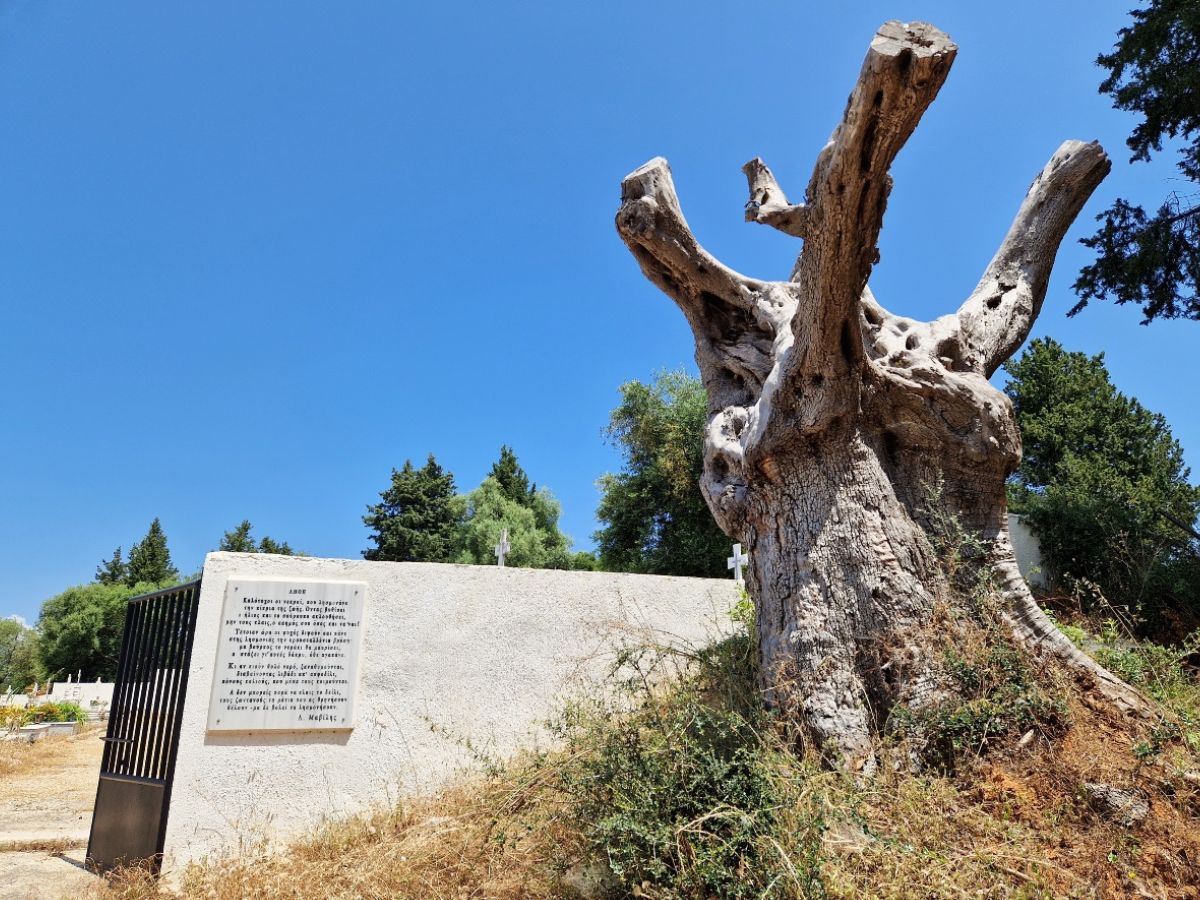
At the entrance, you will see a plaque, with a poem by Lorentzos Mavilis, a famous Greek sonneteer and poet from the island of Ithaca.
This short, moving poem is about oblivion, and people who are no longer with us. I thought the word “oblivion” was very appropriate, not only for the cemetery, but also for the abandoned monastery.
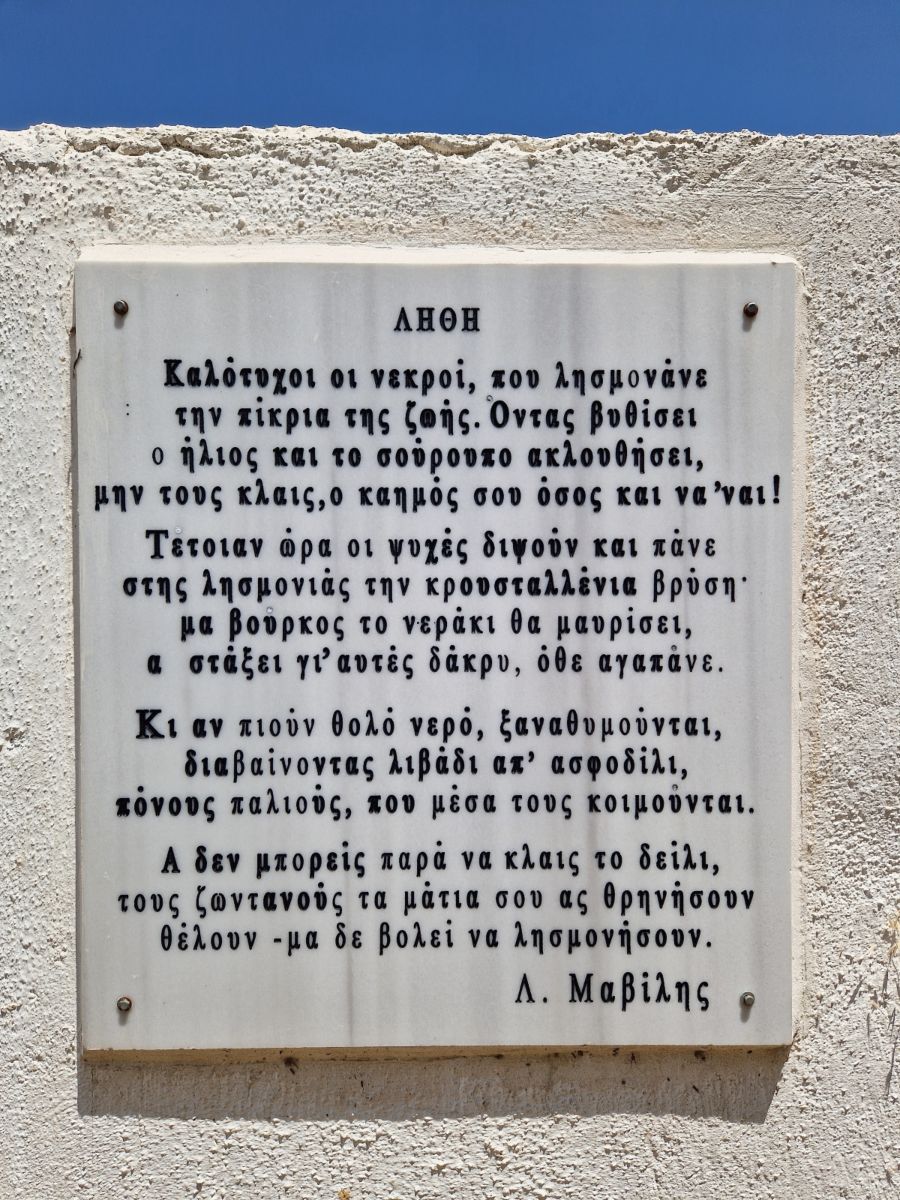
This is a rather melancholic poem, and I won’t attempt to translate it. If you want, you can use Google translate on this Wikipedia article to get a rough idea!
How to get to Askitario Monastery
Askitario is very close to both Roda and Acharavi, at the north of the island. It’s also a half hour’s drive from Kassiopi, and just under an hour from Corfu Town.
To secure a rental car in Corfu before you get to Corfu, check out Discover Cars. We were told that, in summer 2022, cars were completely sold out in Corfu, and they had to bring in extra cars from the mainland! So don’t leave it for the last minute.
And if you haven’t driven in Greece before, have a look at this article about driving in Greece.
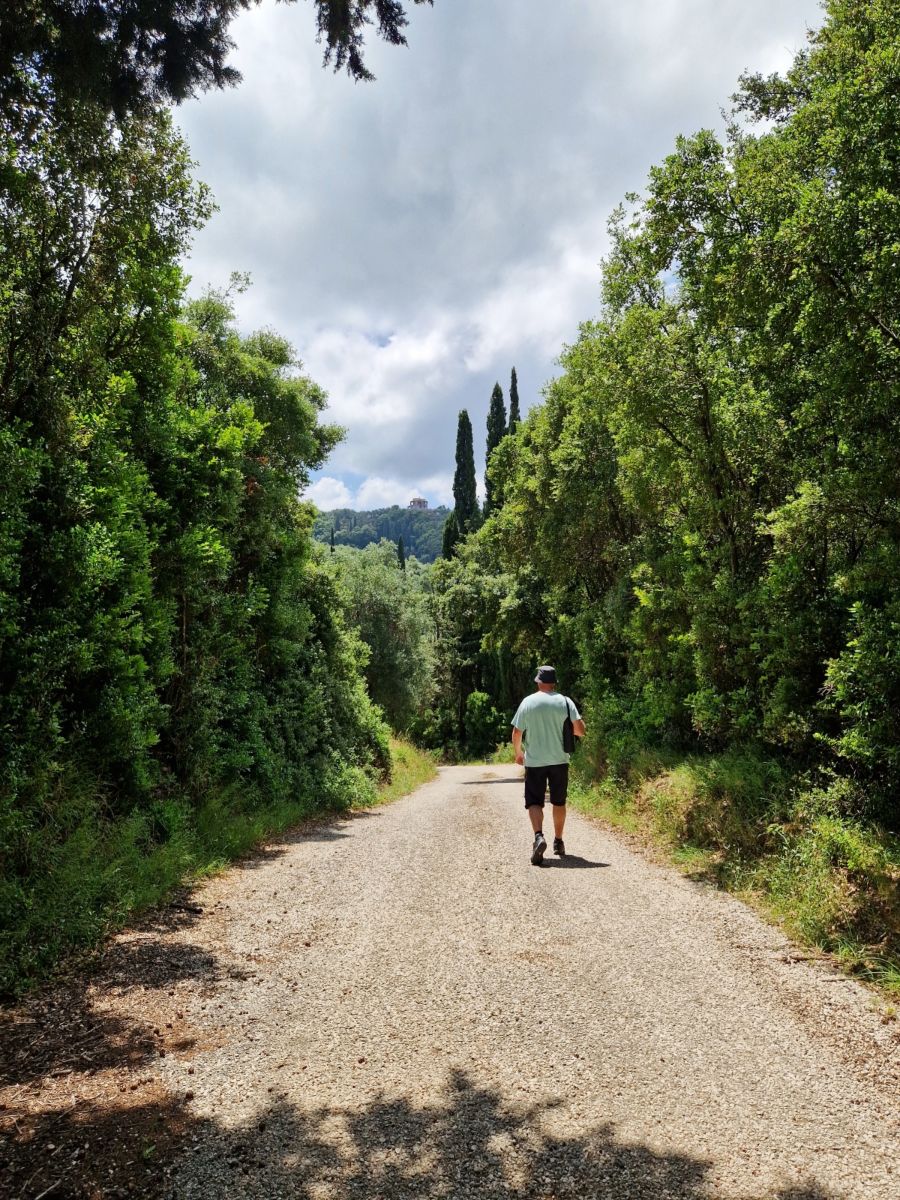
You can drive all the way to the site with a car or motorbike, but you can also leave it on the main road and walk the last 600 meters or so. Here is the exact location: Askitario Corfu.
The closest village to Askitario is Nymfes, where you can stop for a quick bite to eat. You can also walk to Nymfes waterfalls, and enjoy the lush nature and lovely hiking paths!
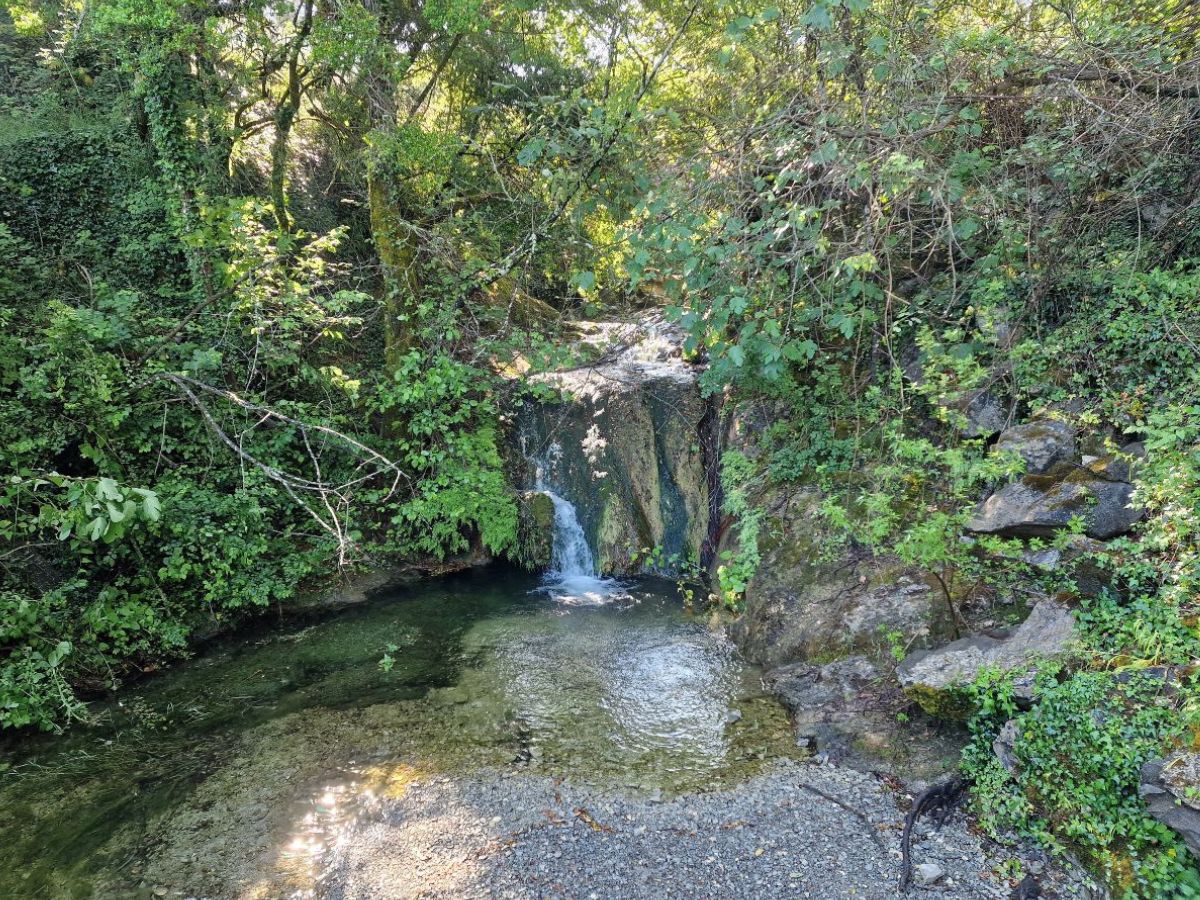
Or you can head out to Episkepsi village, and have a meal at Nikos Manis, a grill house which is also where the village locals hang out. Everything is home-made and delicious, and great value for money – this plate was only 8 euro!

After that, you can head to the quiet Almyros beach, and spend a few hours. Or you can stay until the sunset! In my opinion, this was one of the most relaxing beaches in northern Corfu.
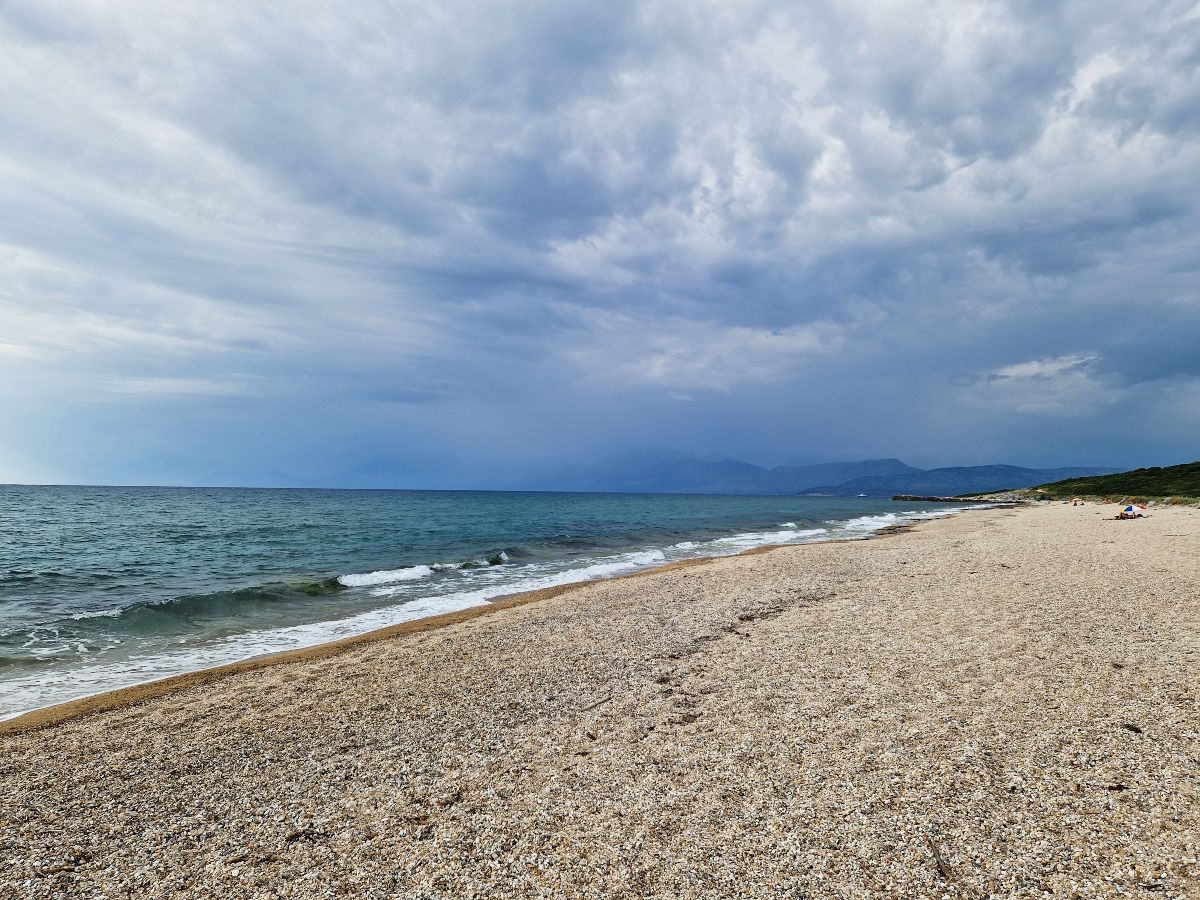
Hope you enjoyed this article about Askitario in Corfu – if you visit, let me know what you thought!
Also, have a look at these other guides:
 Hi, I’m Vanessa from Athens! Among other things, I love exploring the Greek islands, and finding abandoned buildings in the middle of nowhere! Follow me on Facebook for more Greek-related inspiration.
Hi, I’m Vanessa from Athens! Among other things, I love exploring the Greek islands, and finding abandoned buildings in the middle of nowhere! Follow me on Facebook for more Greek-related inspiration.
